Pioneer Peter Cox sees potential for Denmark
In the series on European Tiny House developments, this time we place the focus on Denmark and talk with pioneer Peter Cox, initiator of Thriving Willow. On his website you will find a lot of information about the Tiny House movement in Denmark and beyond.
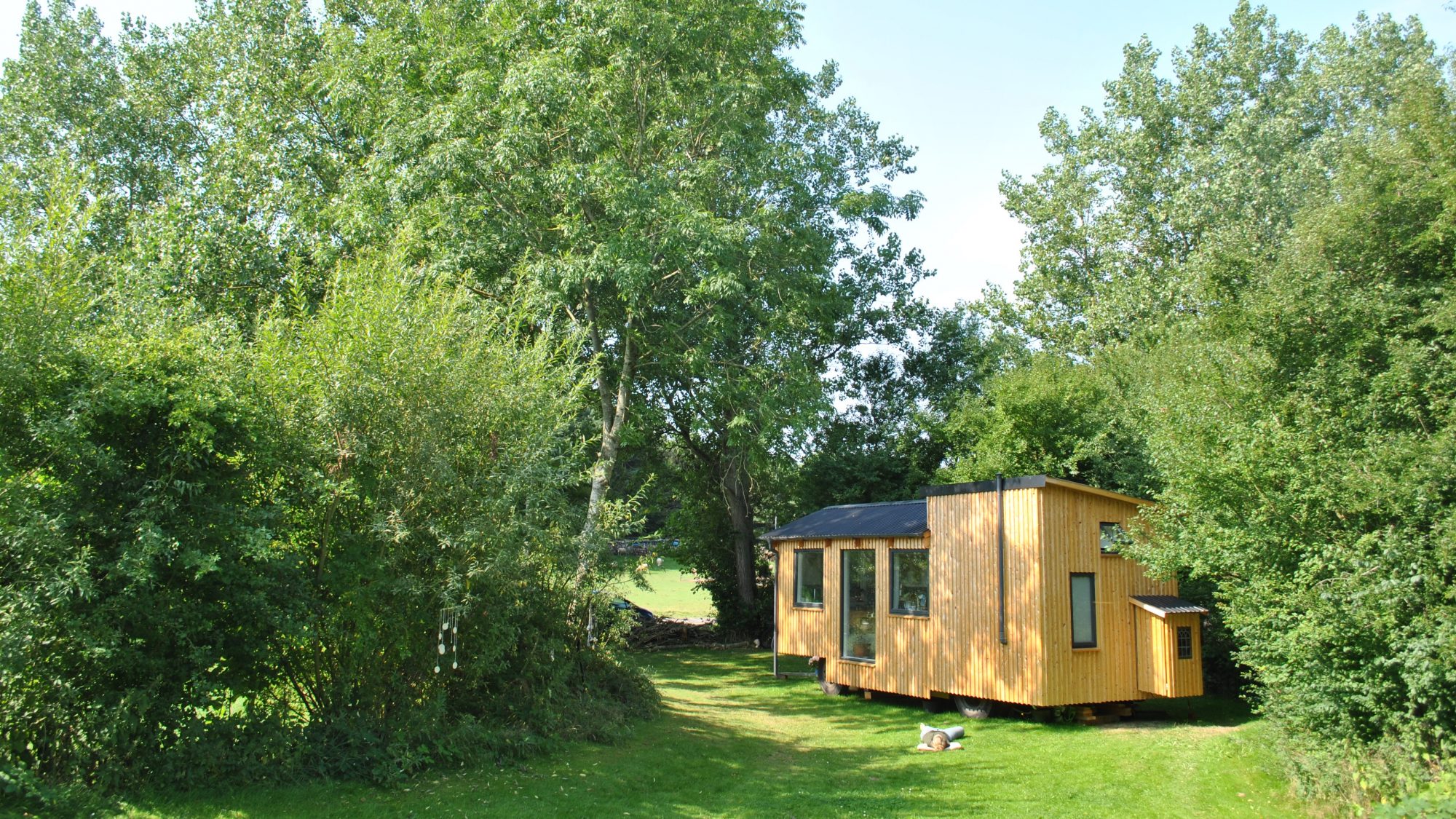
Financial freedom, and yet a real house
Peter explains enthusiastically: “Marie and I are building a Tiny House in Denmark. I also work as a kite surfer, a dream job, but with a low income. Our goal is to experience financial freedom. ”
The surfing handyman starts off: “We used to live in student apartments and summer holiday houses of approximately 30 m2. At the end of 2019 we started building our own Tiny house, in which we started living in April this year (2020).” The Tiny House is habitable, although off-grid facilities are still being worked on. Peter explains: “The goal from the start is to build a Tiny House that feels like a house and not a caravan. Marie would like to live in a cave and I, myself, would like to live in a greenhouse with large windows. Our compromise was to build walls from natural materials and incorporate large windows into the design.”
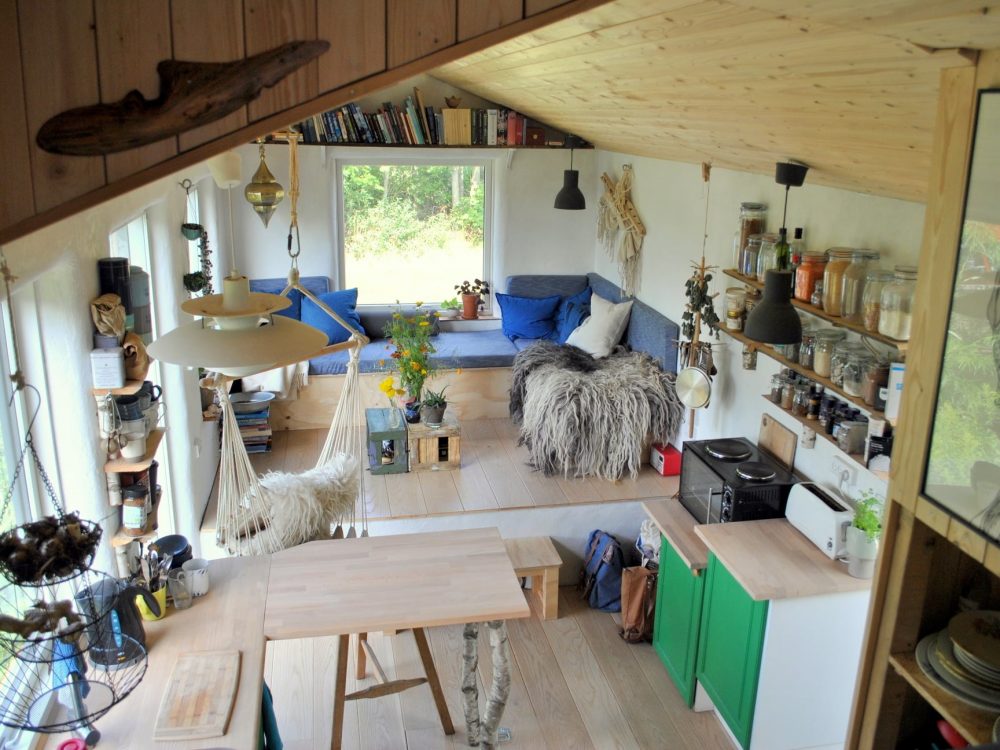
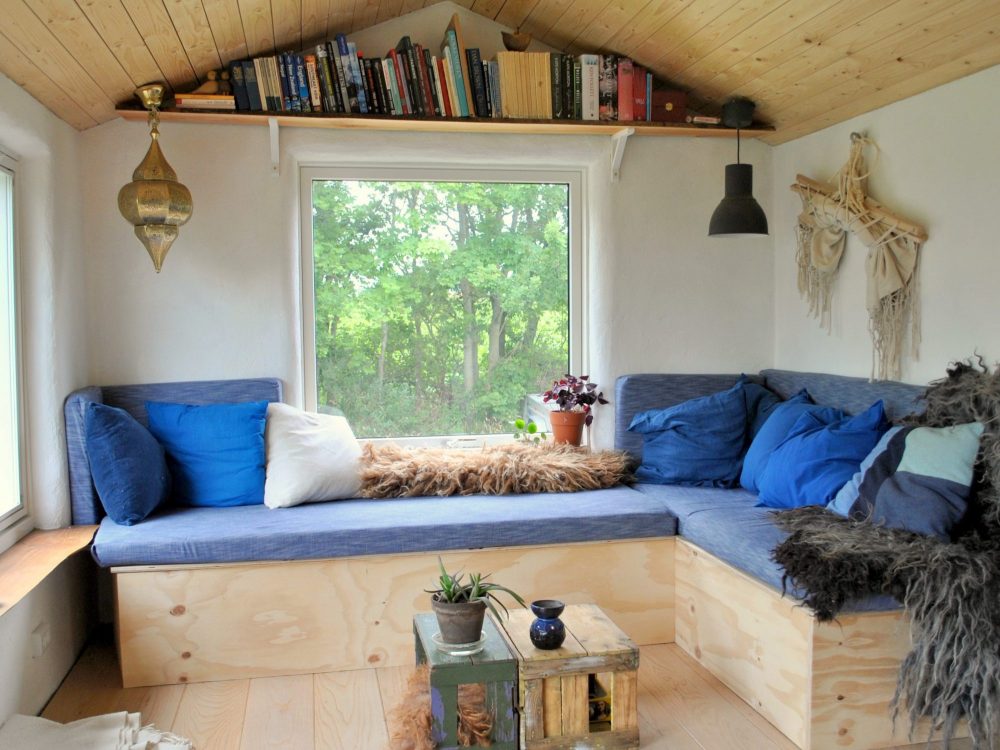
The two different shapes in the roof keep the house from looking like a boring block. In addition, the use of only breathable materials ensures a pleasant indoor climate. “We are currently in the second phase of construction, setting up the off-grid solutions. Such as collecting and cleaning rainwater, solar panels on the roof and installing a woodstove as a heat source.”
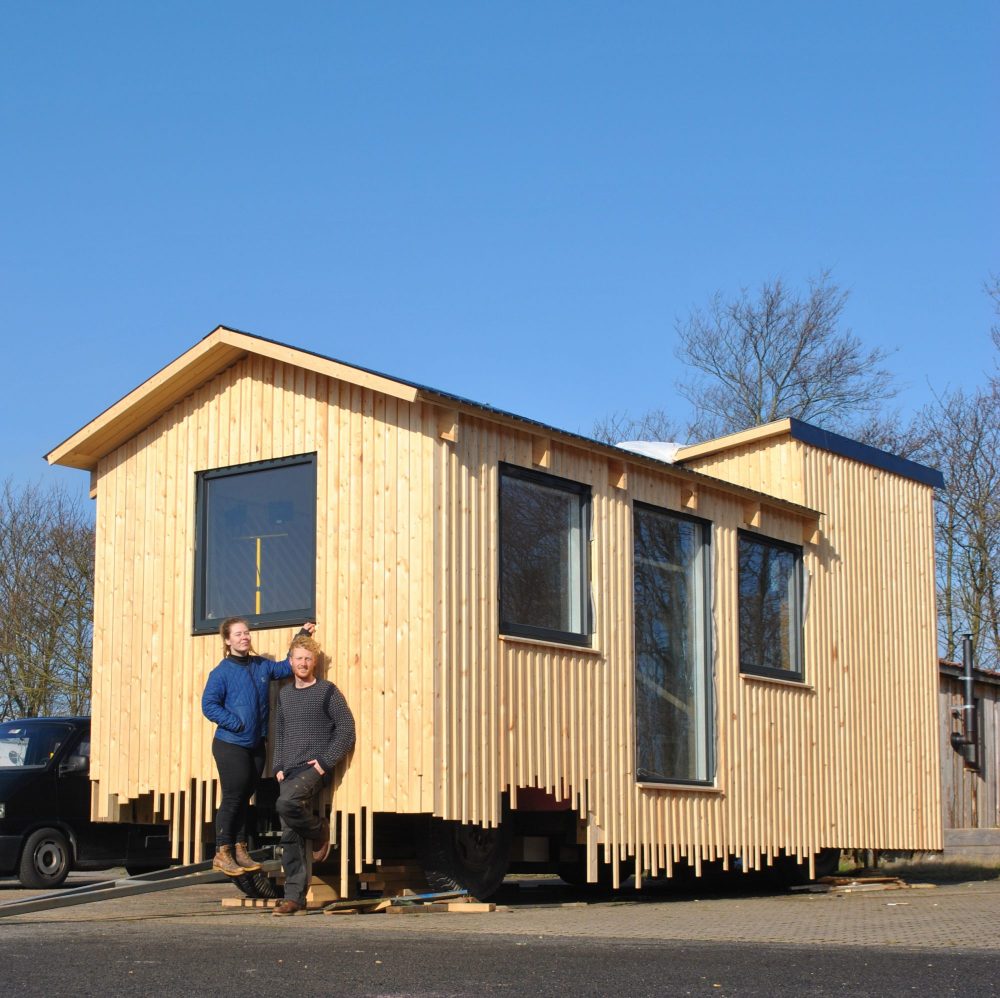
Thriving Willow as a source of inspiration
Peter’s website aims to inspire and show that financial independence is accessible to everyone: “Build your own Tiny House without previous experience, create your own lifestyle, have room for flexibility and also work in a dream job. It is all achievable.” Peter wants also to create awareness about the Tiny House movement in Denmark. He hopes that more people will embrace living on less m2, whether it concerns favorable financial, psychological, social or sustainability aspects.
In Denmark there is still a lot of mission work to be done as well. Peter says about this: “Many people think that if your Tiny House is on wheels, you can see it as a camper or caravan. This is not quite right. In Denmark the rules are as follows: If the vehicle has been parked in the same place for more than 6 weeks, it must be registered as a permanent structure and comply with standard building regulations. And that is not easy for a small building. For example you need a lot of insulation and thick walls to achieve the insulation requirements.”
Location, location, location
Denmark has little or no legal locations for Tiny Houses all year round. Peter: “Those who do live in a Tiny House keep quiet and hope that improvements and developments will come in the field of Tiny House regulations. Slowly but surely this is moving in the right direction. Cities see the positive effects of ecovillages and small communities in attracting newcomers. It’s also a great way for cities and districts to profile themselves as the pioneer places that welcome the Tiny House movement and connect a more climate-friendly lifestyle to their name.”
But aside from the municipalities that love the idea of Tiny Houses and can profile themselves with the movement, most places are less enthusiastic about the idea. “Less profit, taxes and a ‘new’ alternative lifestyle do not go well with the traditional stable housing market. Some Tiny House enthusiasts believe that municipalities fear the consequences of admitting Tiny Houses would be the start of communities where health and safety standards are below average. Our task is to show that the average Dane also has a conscious and positive interest in living small!”
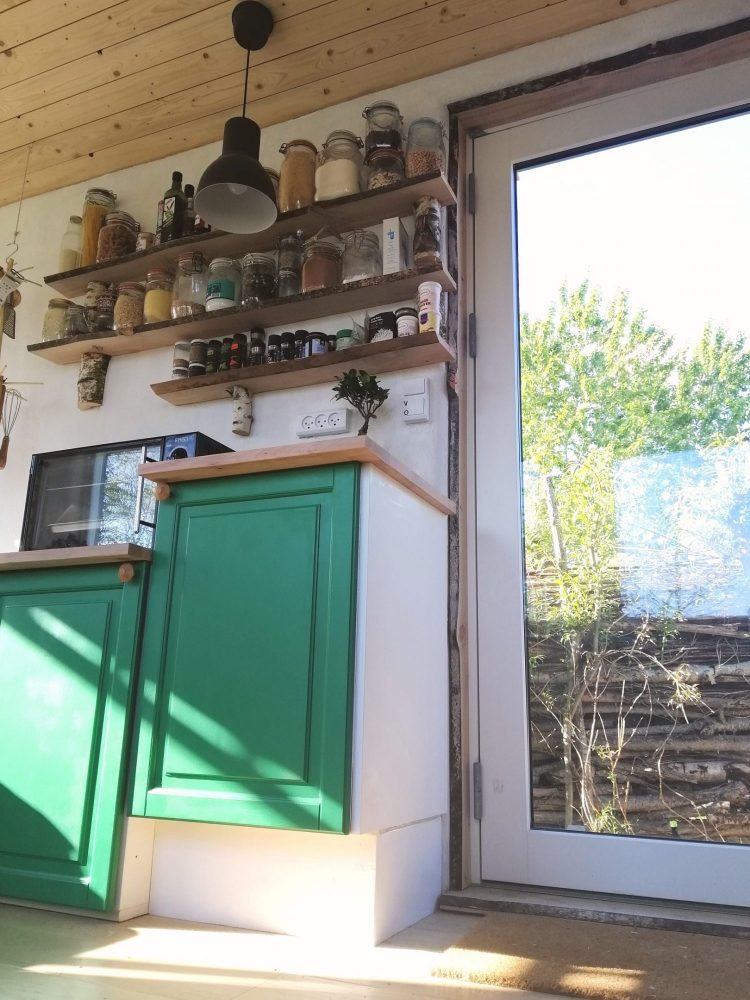
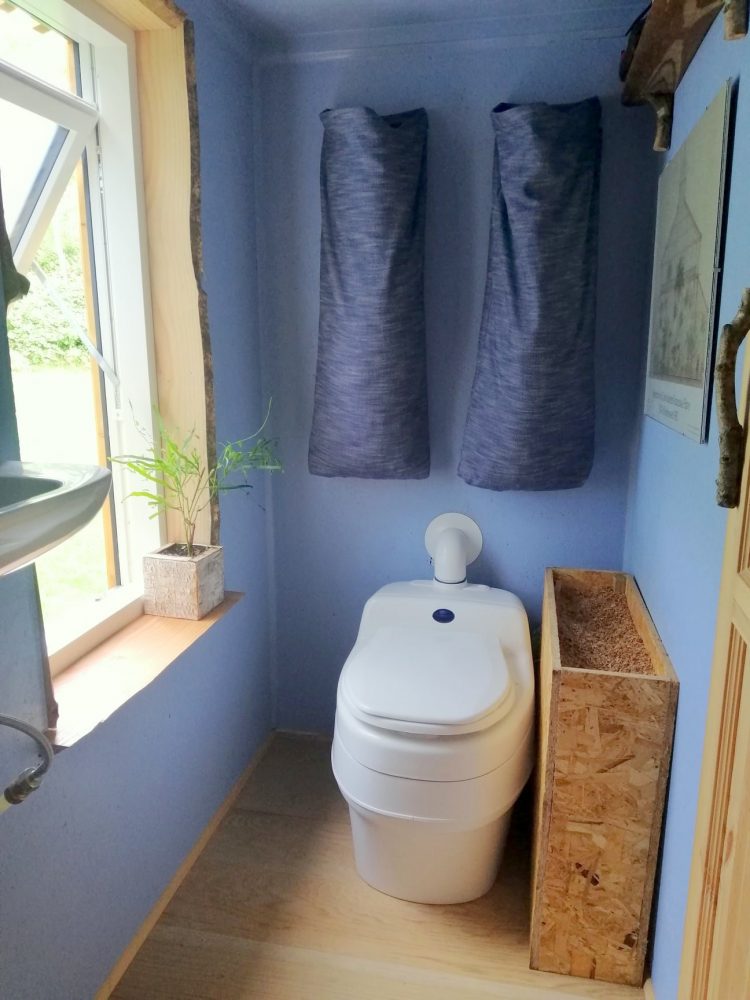
Tiny House organization on the rise
The Tiny House movement is not yet nationally organized in Denmark according to Peter, because each area has its own rules and regulations regarding Tiny Homes. “But groups and initiatives are starting to form across the country, working to make a difference in their particular district. And when they succeed, they help neighbouring districts by functioning as an example project.” On Facebook groups one after another starting builder pops up to share his or her experiences with other Tiny House enthusiasts. “We started a Facebook group ourselves a year ago and now have 3850 followers.”
At the moment there may be one or two companies building Tiny Houses according to Danish normal building regulations. “The costs for these houses quickly runs up to € 67,000, which doesn’t make much of a difference to buying an ordinary house. That is why there is a boom in DIY builders in Denmark in 2020. This is also because in 2020 quite some articles about Tiny Houses in Denmark were in the newspapers and awareness was created by a 30-minute TV program on the national Danish channel DR1. Moreover, you feel an increase in the desire to be able to live in freedom in a hectic world.
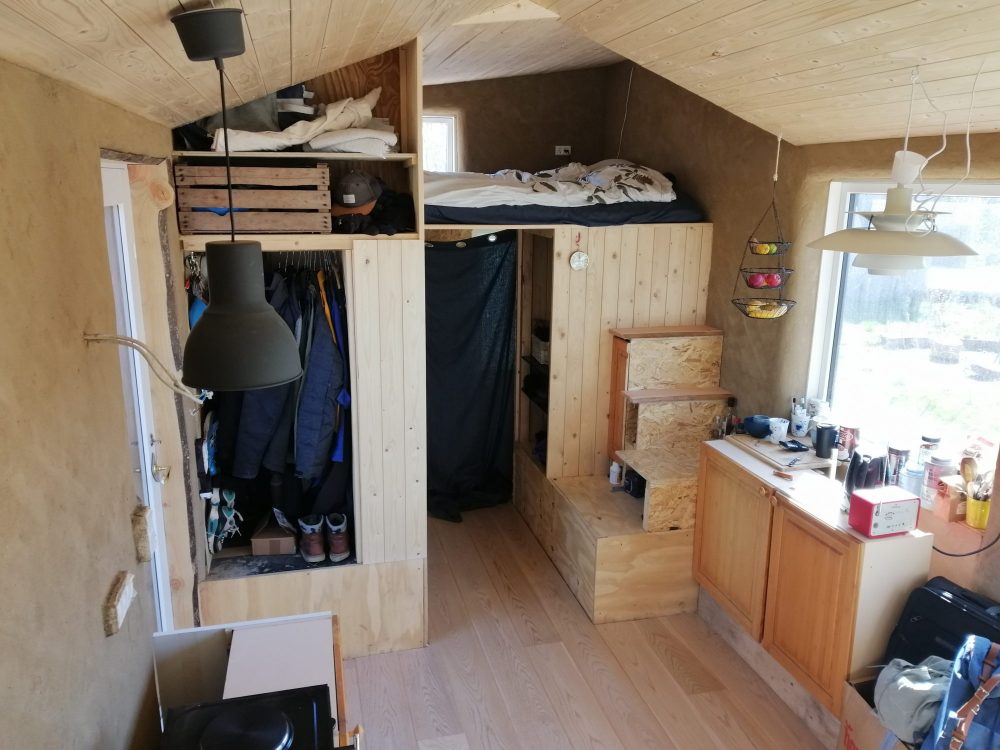
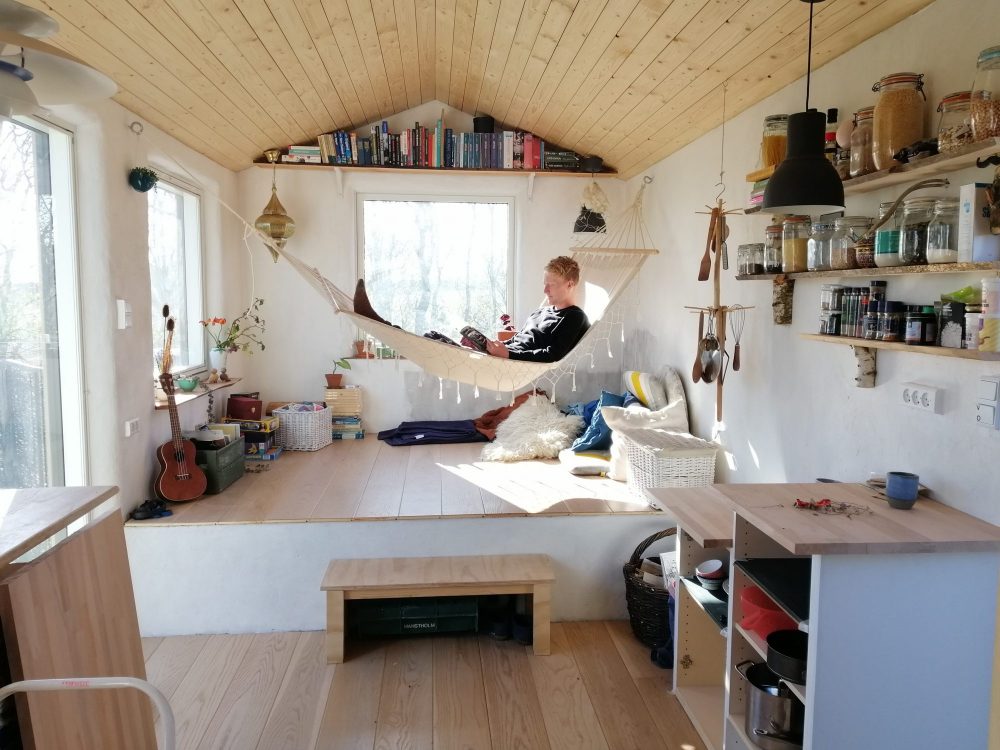
Peter is optimistic about the future of the Tiny House movement. “People are starting to find out that a group of front runners should just go ahead and build their own Tiny House, so there is a reason for the Danish government to create a workable set of sustainable regulations that we can use to move forward.”


Leave a Reply